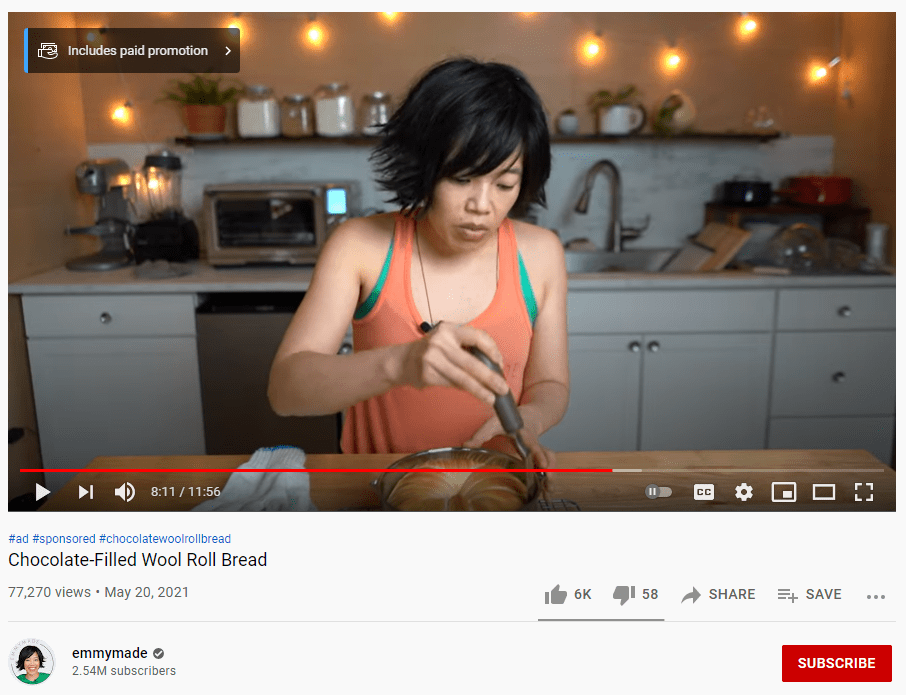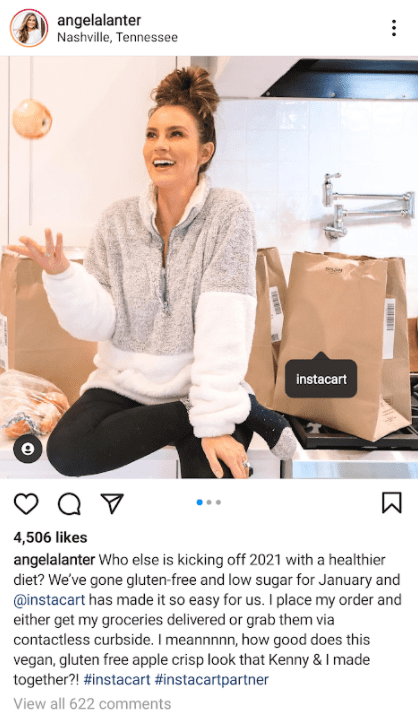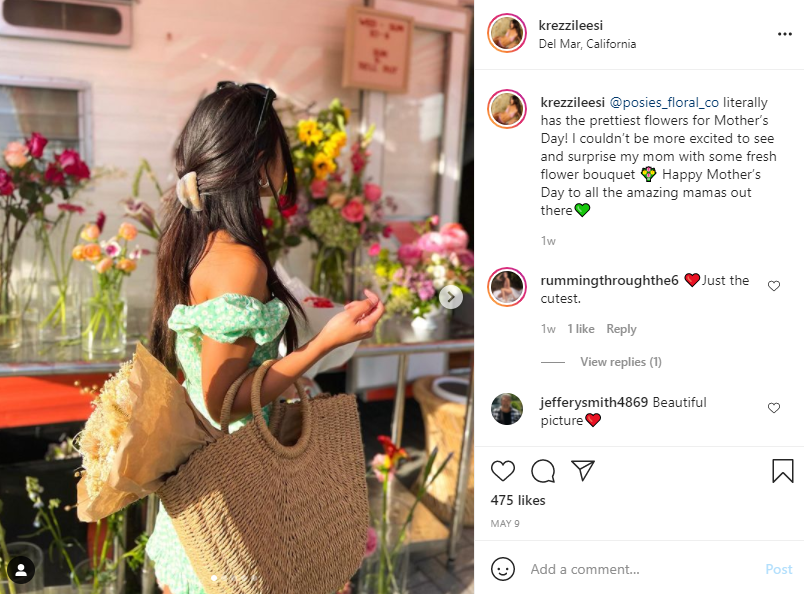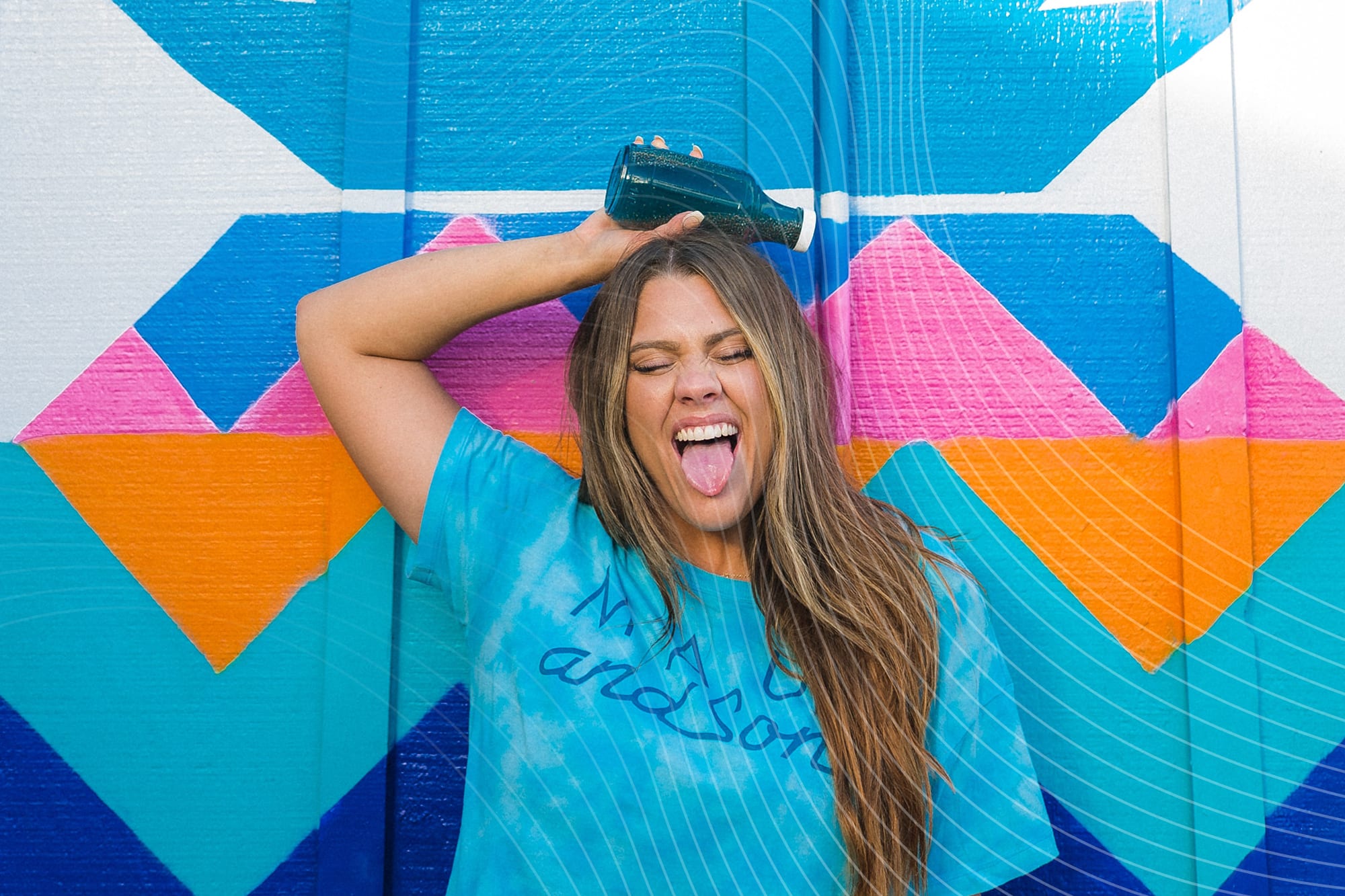Want to reach your target audience and boost your brand’s authenticity at the same time?
Look no further than sponsored content to do the trick.
Whether through influencer marketing or sponsored ads, partnerships are a proven way to introduce your products to relevant customers. Doing so is fair game for household names and up-and-coming companies alike.
And so no matter what you’re selling, there are sponsorship opportunities to help you build buzz.
In this guide, we’ll break down the basics and best practices of sponsored content for first-timers.
What is Sponsored Content, Anyway?
Let’s kick things off by defining sponsored content.
Sponsored content is a form of digital advertising in which brands leverage relationships with influencers (or other brands) who promote their products their behalf.
The term gets thrown around a lot by marketers online, but typically refers to the following:
- Organic social media posts that are sponsored via paid promotion by brands (think: influencer marketing, #ad posts on Instagram, or sponsored YouTube videos)
- Traditional display advertising on social media that’s highlighted as paid promotion
Note: for the sake of this guide, we’re going to focus mostly on #1 versus #2.
The concept behind sponsored content is simple: through relationships and partnerships, advertising feels more human and less “salesy.”
These types of advertisements also require less technical optimization, instead emphasizing relationship-building to score more engagement.
What Types of Sponsored Content Should Brands Try?
To kick things off, let’s look at some different examples of sponsored advertisements in the wild.
Sponsored Posts
When we talk about sponsored posts, we’re talking about content that highlights or shouts-out a particular product. These posts might feature a promotion as the centerpiece of the content or simply make light mention of it throughout. Ideally, these posts should feel organic: promotions obviously shouldn’t be forced.
Here’s a great example of sponsored content via YouTube, clearly labeled #ad and #sponsored tags.

When it comes to sponsored content on social media, the brand featured is typically front-and-center. With input and direction from sponsors, influencers use specific captions, hashtags, and creatives approved by the brand. Here’s a sponsored Instagram post, for reference:

While some sponsored posts are more subtle than others, it’s required for influencers to disclose their relationships with advertisers. This is done not only for the sake of transparency but also due to FTC requirements (but more on that later).
Perhaps the biggest benefit of sponsored posts is that they’re published from influencer accounts that receive more engagement and reach than brand accounts. As the public at large is ignoring traditional ads, sponsored content feels less in-your-face and has a much-needed human touch.
Sponsored Post Ads
Sponsored posts are akin to display ads on social media, the only difference is that they’re organic posts repurposed as ads. For example, Facebook and LinkedIn sponsored content allows you to take a top-performing post from your regular feed and convert it into a promotion for a specific, target audience.
It’s common for sponsored post ads to feature influencers and customers. Here’s a good example from Amazon via Facebook:

Sponsored Ads
Sponsored ads are simply ads that label themselves as “sponsored” on social media (AKA traditional ads). For example, ads served through Instagram Stories are presented this way. Much like sponsored post ads, these promotions are most effective when they feel like an organic piece of content versus an ad (see Thrive Market’s sponsored Instagram Story below).

Why Now’s the Perfect Time to Try Sponsored Content
As brands invest more and more in social media advertising, sponsored content is booming in popularity. Below are some key benefits of sponsored posts and why branded partnerships are all the rage.
Build Brand Awareness and Reach Your Target Audience ASAP
We’ve seen organic reach down across social at large, highlighting the growing pay-to-play nature of social ads.
Through sponsored content, you can basically bypass social media algorithms that restrict your own account’s reach.
How so? Consider that traditional ads allow you to zero in on your target audience based on specific parameters such as interests and demographics
But sponsored content goes a step further as you partner with people with proven engagement. Influencers know what it takes to consistently win hundreds or thousands of interactions per post. Getting that kind of exposure via ads would require a ton of trial-and-error, not to mention a massive budget. Doing so organically is almost impossible for brands, too.

For brands on the rise, influencer marketing is arguably the most cost-effective way to introduce yourself to a new audience and build word of mouth via social media.
Establish Trust with Customers and Show Off Your Human Side
Give your audience some credit: they know that sponsored content is a form of advertising.
That said, recent research notes that consumers trust sponsored posts more than they do traditional ads. Not only that, but millennials and Gen Z look to influencers to learn about new products.
As shoppers become more desensitized to ads, having a human element to your promos can be a game-changer. After all, influencers are responsible for conveying their values and voice in a way that resonates with their followers. If nothing else, having people-centric promotions is a nice change of pace versus lifeless product photos.

Influencer Partnerships are More Efficient (and Effective) Than Ever
While influencer marketing and sponsored content was once unexplored territory, times have changed.
Influencer marketing is booming, plain and simple. This spells good news for brands and influencers alike.
That’s because brands can tap into new audiences regardless of their niche or product these days. From micro influencers in specific industries to massive influencers with millions of followers, there’s someone out there who shares your values and fits within your budget.
We’ve seen firsthand just how powerful sponsored content can be for brands through working with millions of influencers. Thanks to tools like IZEA, the process of finding partners is easier and more streamlined than ever. Rather than dig endlessly for partners, we take the legwork out of the process by presenting brands with influencers that fit their needs.

And trust us: those influencers are eager to work with brands to help build their own credibility and appeal to their audience. When done right, partnered posts represent a win-win relationship for both parties.
The Importance of Sponsored Content Guidelines and Laws
Before you dive headfirst into sponsored content, it’s important to understand the legalese and best practices behind partnered promotions. Generally speaking, most platforms follow the FTC’s own guidelines regarding social media and how endorsements should be treated.
To summarize, sponsored posts need to tick the following boxes:
- Present clear language (“ad” or “sponsorship”) that denotes that the post is indeed part of a promotion or published in exchange for compensation
- The relationship between the brand and publisher must be disclosed in a way that’s “hard to miss” (think: in the title of a post, throughout a video, not just buried in the description)
- Claims made about a promoted product or service need to be authentic
Legal guidelines regarding sponsored content should be taken seriously. That said, sticking to them doesn’t mean crushing the creativity of your sponsored campaigns.

An upside to working with an experienced influencer is that they already know the ins and outs of any given platform when it comes to sponsored content. That’s because ultimately the responsibility to stick to the guidelines above falls on them.
3 Must-Dos for Your First Successful Sponsored Content Push
To wrap things up, we’ll highlight some considerations and first steps to take if you’re serious about sponsored content.
1. Determine Your Goals, KPIs, and Budget
Just like any type of ad campaign, you need to figure out what you want to get out of your investment.
Sure, influencer marketing is cost-effective by design. That doesn’t mean you can afford to ignore the planning phase of your campaign.
For example, what are your goals? Are you more concerned with brand awareness or scoring sales?
And on that note, which metrics will determine whether or not your campaign is a success? For example, one influencer campaign might focus primarily on engagement and impressions while another focuses solely on payments.
Speaking of payments, it’s also important to determine what you’re willing to spend and how you plan on compensating influencers taking part in your marketing push.
As a side note, a platform like IZEA can help you hash out and track all of the above. Doing so makes your campaigns more data-driven and measurable, meaning you can quickly determine the ROI for any given sponsorship.

2. Choose Sponsorship Partners That Make Sense for Your Brand
The process of finding influencers can be downright daunting, especially if you’re trying to do it “by hand.” As a starting point, consider the following three parameters for your search:
- Follower count and engagement. Note that different tiers of influencers have their ups and downs and follow count isn’t the be-all, end-all of what an influencer is worth.
- Platform. In most cases, it makes sense to push for sponsorships on platforms where you already have an existing presence.
- Voice, values, and audience. Does the influencer’s tone reflect your own? Do they share an audience that fits your customer demographics?
Again, searching for influencers can be a massive time-sink. We can’t stress enough how much IZEA streamlines the process. Allowing you to search by follower size, platform, tags, and more, you can find the right influencers in a snap.
3. Communicate Goals and Expectations with Influencers
Keep in mind that creating sponsored content is a two-way street. Although influencers are responsible for the actual publication of content, consider that you’re on the hook for creative direction, deliverables, and instructions to make the campaign a success. Influencers can do a lot of the heavy lifting, but they can’t do much without your support.
But this again speaks to the upside of working through IZEA. With a vetted roster of influencers with legitimate engagement, you can easily find a balance between providing input and giving creators room to do their thing.
Is Sponsored Content on Your Company’s Radar?
Sponsored content and influencer marketing represent a new wave of social advertising that’s proven to win customers and gain exposure. Now that you know the ropes, you can approach your first campaign with a sense of confidence.
And if you need help doing just that, make sure you check out IZEA’s influencer marketing platform to find the perfect talent for your sponsored content.








